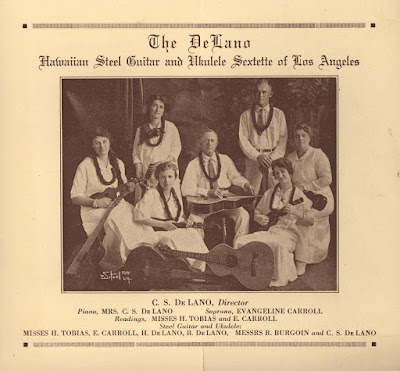 First, some not so good news about our two stranded astronauts on the International Space Station, and worse for Boeing. NASA decided not to use the Boeing Starliner, and instead, send it home unmanned, to make room for the SpaceX Crew Dragon spacecraft to bring Suni Williams and Butch Wilmore home. But this cannot occur until February. Thus, an 8-day mission will end up taking 8 months, if all goes well.
First, some not so good news about our two stranded astronauts on the International Space Station, and worse for Boeing. NASA decided not to use the Boeing Starliner, and instead, send it home unmanned, to make room for the SpaceX Crew Dragon spacecraft to bring Suni Williams and Butch Wilmore home. But this cannot occur until February. Thus, an 8-day mission will end up taking 8 months, if all goes well.
In many ways, the ukulele is a Hawaiian instrument, with origins from three Portuguese settlers who in 1879 first brought their braguinha, cavaquinho, timple and rajão instruments into the sugar plantation. After completing their 3-year contract, Manuel Nunes, Augusto Dias and Jose do Espirito Santo, Madeira cabinet-makers, modified their smallish guitars for the Hawaiian market in 1886. Thus was born the 'ukulele, meaning jumping fleas.
There are several kinds of ukuleles. Here is a comparison showing the range of each instrument with a guitar.
After development in Hawaii, the uke went international- The first international expansion in 1915 was to the USA, for the Hawaiian Pavilion of the Panama-Pacific International Exposition in San Francisco featured George Awai and his Royal Hawaii Quartet.They also introduced the lap steel guitar. Influenced the Jazz Age and a range of string bands.
- In 1929, Hawaiian-born Yukihiko Haida (left) brought this instrument home to Japan when his father passed away. He and his brother Katsuhiko (right) formed the Manoa Glee Club. However, authorities during WW2 banned music from the West. So thirty years after his first visit, Haida founded the Nihon Ukulele Association. Click on this to hear two uke songs by them. The uke and hula dancing today has immense popularity in Japan.
- From the 1930's, British entertainer George Formby made this instrument, and variations like the banjolele, popular. George Harrison, Paul McCartney and John Lennon all played the ukulele. From this photo, I guess Ringo, too.
- Interestingly enough, Canadian educator J. Chalmers Doane changed school music programs across Canada, using the ukulele as an inexpensive and practical teaching instrument to foster musical literacy. There is a lot interchange between Canada and Hawaii.
After the 1960s, the ukulele declined in popularity, but reawakened during 1990s. The primary reason was Israel Kamakawiwo'ole.
The person who sticks in my mind from youth was Herb Ohta, known more popularly as Ohta San. Watch this near hour-long documentary.- Taught by his mother.
- At the age of 9, won an amateur contest for the $10 first prize.
- At 12, met Eddie Kamae on the beach, at that time the best ukulele player in the world, and became his student.
- Graduated from St Louis High School and the University of Hawaii.
- Enlisted in the Marine Corps at age 19 and served for 10 years.
- I remember in 1955 Ohta performing Lady of Spain on the Ed Sullivan Show. Watch this.
- In 1964 recorded Sushi.
- One of his students is Roy Sakuma, who founded the Annual Hawaiian Ukulele Festival.
- Released Song for Anna in 1974, selling 6 million copies.
- Is in the Ukulele Hall of Fame.
- Recently on PBS, Ohta-San: Virtuosity and Legacy. That is the entire one hour program.
- He is now 90 years old.
- He came to 15 Craigside and provided a full concert, for free.
- I also said stars like him come to entertain us, and even the full Royal Hawaiian Band....because we are the Gateway to Purgatory.
View his TED performance of Bohemian Rhapsody. Plus, Jake, Live from Hawaii. One more time, IZ. Finally, if you haven't yet, watch Ohta-San on that PBS documentary.
Typhoon Shanshan is still only at 75 MPH, but could strengthen into a Category 4 by Monday. The track is continuing to move slightly east, with landfall now near Kochi on Tuesday.
Tropical Storm Hone at 65 MPH continues on a predicted path south of Hawaii, bringing rain and some winds to the Big Island today.
















Comments
Post a Comment